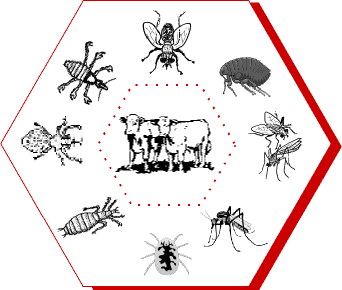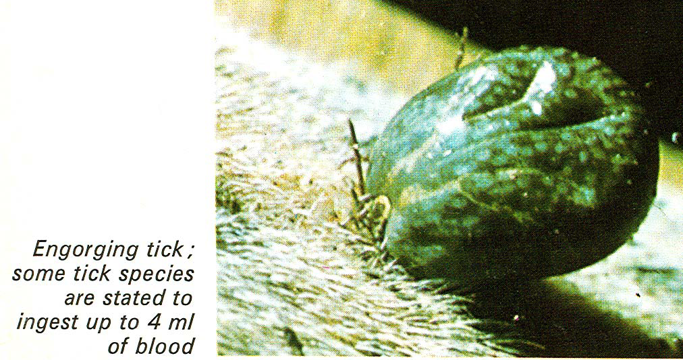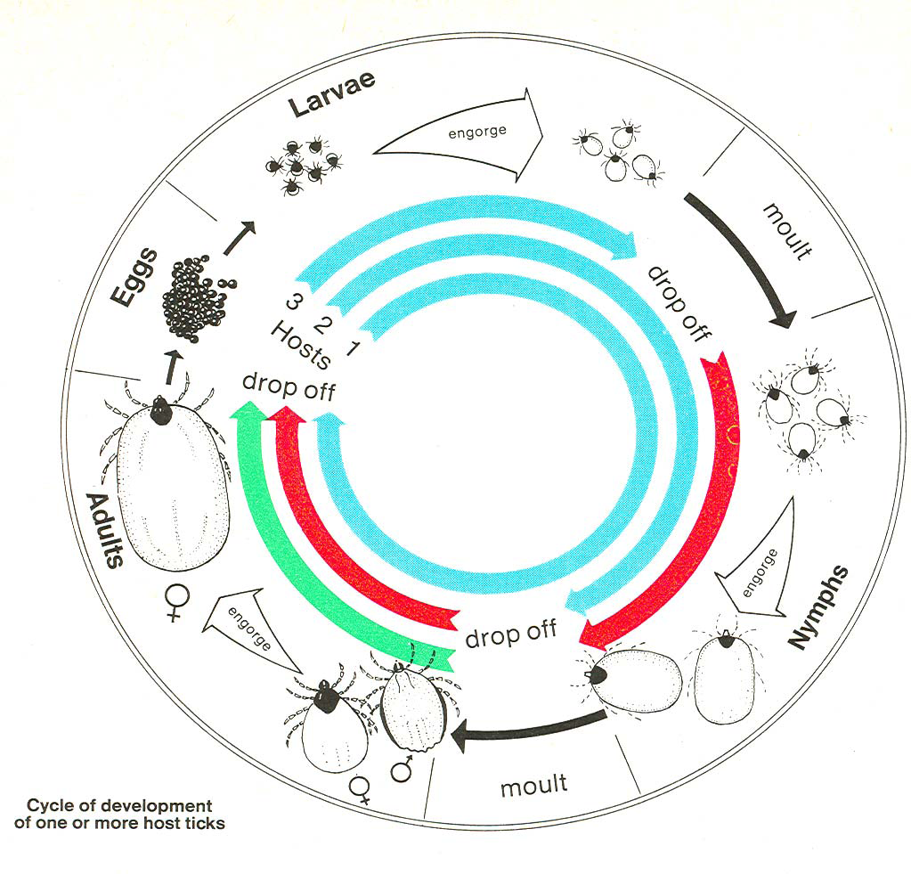The choice of drug and route of administration are determined by the disease, the species, breed, size, etc. Different routes can be used for administering a drug.
External Application
For the treatment and control of external parasites, local application of certain substances (e.g. dipping compounds) to the skin by means of various methods, is discussed forthwith.
External Parasites (Dipping)



Cattle
- Plunge dip
- Spray-races
- Hand spraying
- Hand dressing
- Pour-on solution
Sheep
- Plunge dipping
- Foot-and belly dipping
Horses
- Dip or spray
- Hand spraying
- Dusting with dip powders
Livestock Cattle
Plunge-dip
Previously, when arsenic was the most important dipping substance, large dipping tanks were generally used as it forced the animal to swim through, thus ensuring it be in contact with the dipping fluid for a longer period. Nowadays only proper wetting of the animal with the modem organic dipping compounds is necessary.
Smaller dipping tanks are now recommended (+ 15 000 litres) as this helps in keeping costs down when making use of the more expensive dipping compounds. For efficient control of parasites, it is essential to wet the whole animal with a properly constituted dip-wash at the correct strength. (To obtain this the label on the container should always be read carefully). The dipping tank must be constructed in such a way that there are 5 to 6 steps at the entrance leading down to the water level. This provides the animal with something to kick against when jumping into the tank, positioning the animal’s body in such a way that the head is forced below the water surface when it plunges, ensuring complete wetting with the dip wash.
To maintain the dip-wash of modern dips at the correct strength, (tank tests are time-consuming or not available) it is easy and fairly accurate if done in the following way:
- Calibrate the tank and mark every 500 litres on the wall of the tank as well as on the dipstick.
- After preparing the contents of the dipping tank correctly at the fresh filling rate, record the tank level when the day’s dipping is completed.
- Before commencing the next dipping, measure the tank capacity and compare this with that at the end of the previous dipping to establish whether rain has diluted the dip wash.
- If the latter is the case replenish with dipping fluid necessary for the volume of extra water which has entered the tank.
This easy, on the spot check, when done regularly at each dipping, will ensure a fairly accurate dip strength.
To protect the dip-wash in the tank as much as possible, avoid dirt and exposure to the sun. A footpath, 3-5 meters long, through which the animals have to walk before plunging, is of great help to clean the hooves and avoid soiling of the dip-wash. A well-constructed roof over the tank, to avoid evaporation and prevent dilution by rain, is just as essential as a footbath.
Spray-Races
The spraying of livestock was adopted with the introduction of modem organic chemicals which were more costly and more difficult to test than arsenic, and so the development of the spray race. Spraying of livestock has the advantage that the dip is freshly made up at full strength before it is used, thereby giving maximum control and at the same time, any uncertainty regarding the dipping strength is eliminated.
The spray race has an advantage over plunge-dips, provided the following point are observed:
- Only use a manufactured spray race approved by a pharmaceutical company.
- These are synchronised with regard to the size of the nozzle, type of nozzle, speed of the pump, size of the pump, the pressure and position of the pipes and nozzles in order to ensure proper wetting of all parts of the animal,
- Mix enough dip required for the day’s spraying so that no dirty dip remains in the sump or pump until the next dipping.
- Flush all pipes and the sump with clean water after use to prevent blocking.
- Ensure that the pump pulley runs at + 2 000 rpm. When all nozzles deliver freely, this ensures a delivery rate of 700 litres per minute at a pressure of 1, 4 bar.
- Ensure that all the nozzles and the strainer are clean before spraying is started. Use clean water only.
- Never build a spray race near to or under trees, as seeds and leaves may block the strainer and nozzles.
- Build the spray race with the entrance facing north, if possible. In doing this, the animals, when entering, will walk away from the sun and not face it. Also, keep in mind the prevailing winds when erecting a spray race.
- Wetting of the ears and under the tail is not always as efficient as in a plunge dip, necessitating special attention to these parts (e.g., hand-dressing).
Hand-Spraying
This should only be used when less than 25 animals are involved. It has been proved over and over again. When herds (larger than 25 heads) were hand-sprayed weekly, the affectivity is greatly diminished. It must be remembered that for hand spraying at least 10 litres of dip-wash is required per animal in order to get it properly. It is also very difficult to wet all parts of the beast standing still. Moreover, a high-pressure spray pump is needed to ensure thorough wetting of the skin.
Hand-Dressing
This method is sometimes used where animals cannot be brought to the dipping tank or where a severe infestation of ticks are present, clustering the ears and underneath the tail.
Only apply hand-dressing materials (patch-treatment) to parts where ticks are clustering. Never treat large areas of the animal, as the animal may become poisoned.
Products such as “Tick dressing S” (chlorfenvinphos) can be used for livestock:
Pour-on solutions: Products that can be poured on or painted on the infected parts of livestock and sheep/goats include: “Drastic Deadline”, “Clout” and “Swift Pour-on”.
Aerosol: An aerosol product such as “Bacdip aerosol” can be applied to heavily infected body parts.
Calibration of Dip- or Spray-Tanks
The most accurate way to fill a dipping tank is by using an open oil drum as a measure. When filled to the top of the drum contains 200 litres.
The dipping tank is filled with this container. Every time a container is emptied into the dipping tank’s sump, the dipstick is marked (calibrated) clearly at the same time. The dipstick is then used to measure the remains after a day’s dipping session.
The following formula can be employed:
Dipping tanks:
Measure:
a = length at water-level
b = length at bottom
c = breadth at water-level
d = breadth at bottom
e = depth of water
Now calculate as follows:
(a+b) ÷ 2 x (d+c) ÷ 2 x e = cubic capacity of dip-tank (1 cubic metre = 1 000 litres)
Spray-races:
Measure:
a = length of sump
b = width of sump
c = depth of sump
Now calculate as follows:
a x b x c = cubic capacity of the spray-race sump. Add the capacity of the sump foot valve.
Livestock Sheep
Plunge-Dipping
Two types of dipping tanks are recommended: the oblong dipping tank and the circular dipping tank. Both types work extremely well, provided the following requirements are full filled:
- The draining pen must be well constructed to facilitate draining and should be large enough to allow complete draining without delaying the dipping process.
- The sheep handling facilities (i.e., kraals etc.) must be adequate in order that they do not slow down the dipping process.
- The exact capacity of the dipping tank should be known to ease the preparation (correct concentration) of dip-wash for the dipping process.
- The dipping tank must be calibrated to facilitate accurate replenishing.
- The presence of a replenishing tank next to the dip will speed up the dipping process and ensure that the dip concentration is maintained.
- Ensure that each sheep is plunged underneath the fluid level at least twice for proper wetting.
NB: There is a distinct advantage in dipping sheep when the wool is short, i.e., 10-14 days after shearing – both as far as thorough wetting and economy are concerned.
Food- and Belly-Dipping
Foot-dipping is recommended for the control of paralysis ticks. The depth of water through which the animals walk should be 15 to 30cm. Belly-dipping is recommended for the control of paralysis ticks. The depth of the dip-wash should be 50-60cm.
Maintenance of Dip-Strength
This point cannot be overstressed when dipping sheep. Whether it is a plunge, foot or belly dip, the following points must be kept in mind:
- The exact capacity of the dipping tank must be known to establish the dip-wash correct strength initially.
- Replenishing must be done regularly and continuously to maintain the correct strength.
- This will ensure that the first, as well as the last animal dipped, will come into contact with the correct concentration of dip-wash to ensure good results.
- Larger dipping tanks (4 000 to 5 000 litres capacity) are replenished less often than smaller tanks (2 000 to 3 000 litres). Nevertheless, it is essential to replenish with fresh water and dipping compound at the prescribed replenishing rate, before one-third of the dip wash has been removed by the animals.
- There is a lot of merit in constant replenishing from a replenishing tank standing next to the dipping tank. In the case of belly-dipping or foot-dipping where the dip-wash depth is of the utmost importance. The constant replenishment method is also recommended. This ensures both correct strength and depth of dip-wash throughout the dipping process.
Click here to view a video that explains sheep dipping.
Click here to view a video that explains sheep drenching.